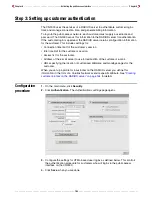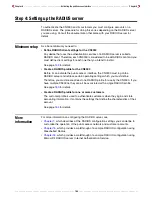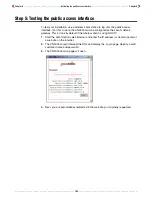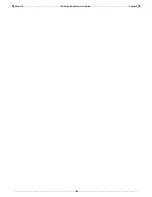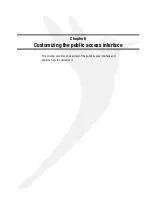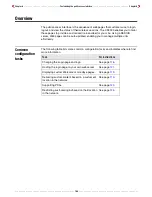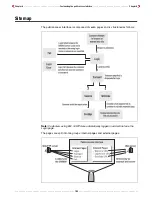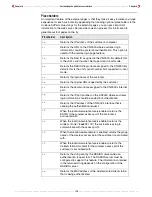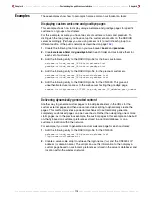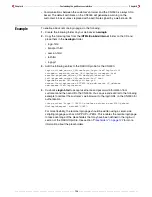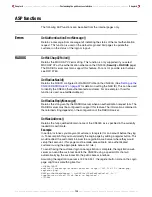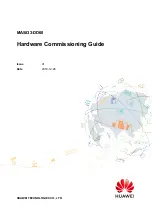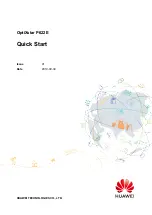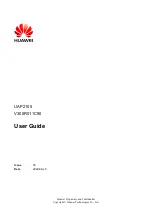
Chapter 6 - - - - - - - - - - - - - - - - - - - - - - - - - - - - - - - Customizing the public access interface - - - - - - - - - - - - - - - - - - - - - - - - - - - - - - - Chapter 6
- - - - - - - - - - - - - - - - - - - - - - - - - - - - - - - - - - - - - - - - - - - - - - - - - - - 114 - - - - - - - - - - - - - - - - - - - - - - - - - - - - - - - - - - - - - - - - - - - - - - - - - - -
Customizing the internal pages
This section explains how to customize the four internal pages (Login, Transport,
Session, Fail), as well as the shared image file (logo) and the message file.
Creating new
internal pages
To create new internal pages, use the fully-commented samples provided on the CD (in
the folder
\HTML\Colubris
) as a starting point. For your reference, these samples are
also reproduced at the end of this chapter. (Additional samples are available at
www.colubris.com.)
Important:
Do not create new pages by saving an internal page while viewing it within
your web browser. The server-side code is removed when you do this and the resulting
pages will not work. Use the examples on the CD as the base for your pages.
The internal pages use a number of Colubris-specific ASP functions to display status
information. You can make use of these functions to enhance your custom pages too.
These functions are described starting on page
129
.
Important
restrictions
Because the internal pages must be loaded onto the CN3000, the following restrictions
apply to their construction.
• You must specify a URL for all the internal pages, even if you only want to
change one page. The pages you do not change can just be copies of the
standard internal pages.
• Do not alter the ID tags “<!-- Colubris -->” & “<!-- Custom -->” located at the top of the
page.
• Do not alter any JavaScript code, except for the Session window parameters width
and height.
• Only one image can be included on these pages. It must be a .gif file (recommended
size less than 20K). This same image file is shared by all pages, and must be resident
on the CN3000. For instructions on how to change it, see
“Examples” on page 116
.
• Do not alter any occurrences of "Get...();" or "GetWelcomeURL();”
• Do not alter any form elements. All names and values should be left intact.
• Do not change the file name extensions of the internal pages.
Loading new
internal pages
To load new internal pages, you must define their URLs using a Colubris-AVPair value
string when you create a RADIUS profile for the CN3000. See
Chapter 7
for information
on how to create RADIUS profiles.
When the CN3000 authenticates itself, it retrieves the URLs for the custom pages, then
automatically downloads and activates them.
Summary of Contents for CN3000
Page 1: ...CN3000 Administrator s Guide...
Page 8: ...Table of Contents 8...
Page 60: ...Chapter 2 How it works Chapter 2 60...
Page 94: ...Chapter 4 Scenarios Chapter 4 94...
Page 106: ...Chapter 5 Activating the public access interface Chapter 5 106...
Page 211: ...Chapter 10 SSL certificates Chapter 10 211...
Page 292: ...Chapter 13 The configuration file Chapter 13 292...
Page 370: ...Chapter 16 Sample setup Microsoft RADIUS Chapter 16 370...
Page 396: ...Chapter 16 Sample setup Microsoft RADIUS Chapter 16 396...
Page 414: ...Chapter 17 Experimenting with NOC authentication Chapter 17 414...



